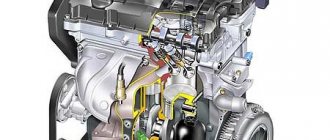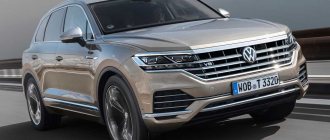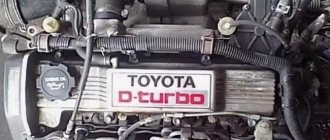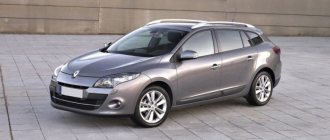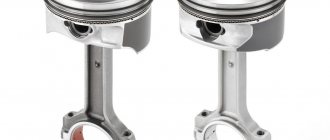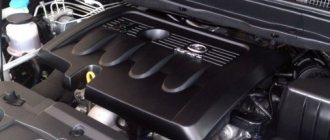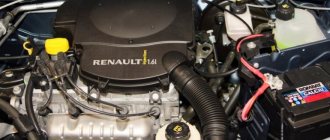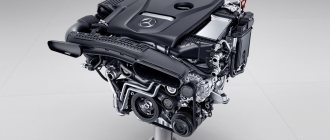Description
In 2001, a new power unit was put into production, code K9K. The engine is a diesel inline four-cylinder turbocharged engine with a wide power range from 65 to 116 hp and torque from 134 to 260 Nm.
K9K
Engine assembly took place at engine factories in Spain, Turkey and India.
The power unit was installed on Renault cars:
- Clio (2001-present);
- Megane (2002-present);
- Scenic (2003-present);
- Symbol (2002-present);
- Kangoo (2002-present);
- Modus (2004-2012);
- Laguna (2007-2015);
- Twingo (2007-2014);
- Fluence (2010-2012);
- Duster (2010-present);
- Talisman (2015-2018).
For Dacia cars:
- Sandero (2009-present);
- Logan (2012-present);
- Dokker (2012-present);
- Lodgy (2012-present).
For Nissan cars:
- Almera (2003-2006);
- Micra (2005-2018);
- Tiida (2007-2008);
- Qashqai (2007-present);
- Note (2006-present).
For Mercedes cars:
- A, B and GLA-Class (2013-present);
- Citan (2012-present).
In addition to the listed models, the engine was installed on the Suzuki Jimny from 2004 to 2009.
The cylinder block is traditionally made of cast iron. The sleeves are formed internally. The crankshaft supports are cast in the lower part.
Aluminum alloy cylinder head. At the top of the head there is a bed for the camshaft.
The timing belt is designed according to the SOHC (single-shaft) design with a belt drive. The danger of a belt break lies in the bending of the valves when they meet the piston.
There are no hydraulic compensators in the engine. The thermal clearance of the valves is adjusted by selecting the length of the pushers.
The pistons are standard, aluminum, with three rings. Two of them are compression, one is oil scraper. The piston skirt has a graphite coating to reduce friction. Metal cylinder head gasket.
The crankshaft is made of steel and rotates in main bearings (liners).
Combined lubrication system. Chain oil pump drive. The oil volume in the system is 4.5 liters, the brand is indicated in the operating manual for the specific vehicle.
Turbocharging is carried out by a compressor (turbine), which is rotated by exhaust gases. The turbine bearings are lubricated with oil from the engine lubrication system.
The fuel supply system includes a fuel injection pump, a fuel filter, glow plugs and a fuel line. This also includes the air filter.
Weaknesses of K9K
- Connecting rod bearings;
- Injection pump, injectors (Delphi);
- Boost pressure sensor;
- Crankshaft position sensor;
More details about weak points
Connecting rod bearings, as already described above, are one of the weak points of the diesel engine in question. The material of the earbuds is fine. The reason for jamming and turning is indicated in the shortcomings. Injection pump, injectors - power systems from Delphi die very early on substandard Russian diesel fuel. There are other more reliable options for fuel equipment, for example, Siemens. Boost pressure sensor - its failure is not common, but it does happen. If it fails, traction disappears. The problem is solved by replacing it with a new one. The crankshaft position sensor - according to reviews, quite often fails on cars with high mileage. The malfunction manifests itself as detonation, instability of idle speed, decreased dynamics, jerking of the car in motion, play of revs, and will not start from the starter. These symptoms may be short-term and in this case computer diagnostics will help. In case of malfunction, the sensor is replaced.
Specifications
| Manufacturer | Valladolid Motores (Spain) Bursa plant (Türkiye) Oragadam plant (India) |
| Engine volume, cm³ | 1461 |
| Power, hp | 65-116 |
| Torque, Nm | 134-260 |
| Compression ratio | 15,5-18,8 |
| Cylinder block | cast iron |
| Number of cylinders | 4 |
| Cylinder operating order | 1-3-4-2 |
| cylinder head | aluminum |
| Cylinder diameter, mm | 76 |
| Piston stroke, mm | 80,5 |
| Number of valves per cylinder | 2 (SOHC) |
| Valve timing regulator | No |
| EGR | Yes |
| Hydraulic compensators | No |
| Turbocharging | BorgWarner KP35 BorgWarner BV38 BorgWarner BV39 |
| Particulate filter | yes (not on all versions) |
| Fuel supply system | Common Rail, Delphi |
| Fuel | DT (diesel fuel) |
| Environmental standards | Euro 3-6 |
| Location | transverse |
| Operating resource, thousand km | 250 |
| Engine weight, kg | 145 |
Typical problems and malfunctions
The list of problems plaguing the 1.5 dCi is quite long. One of the most serious and most common is a malfunction of the power system. As a rule, this is due to the use of low quality fuel, which French diesel does not accept. This is especially true for engines with Delphi injectors, which may not withstand even 10,000 km on poor diesel fuel. The cost of one nozzle is about 8-12 thousand rubles. In modifications with a simple system and “normal” nozzles, you can save a lot by trying to restore their functionality. In the case of piezoelectric injectors, the only solution is replacement.
The turbocharger on some copies can cause trouble after 60 thousand km. Turbochargers were used in two types - fixed or variable geometry.
Sometimes there are cases of cranking of liners and burnout of pistons - due to poorly functioning injectors. In addition, you have to deal with malfunctions of the EGR exhaust gas recirculation valve, which are common for diesel engines. On more powerful versions, problems occur with the dual-mass flywheel.
Another common problem with modern diesel engines is the particulate filter, which can be expensive. It’s better not to ask about the cost of a new one, but pray that the troubles associated with it will bypass you. Sometimes trouble comes from the engine control electronics: the boost pressure and shaft position sensors are especially vulnerable.
As you can see from the review, there are a lot of potential problems with the 1.5 dCi engine. However, the vast majority of them are due to improper operation. To avoid unnecessary and high costs in the future, owners of diesel cars should compensate for the gaps in their knowledge caused by operating only naturally aspirated gasoline engines.
Modifications
Over the years of production, the motor has been improved more than 60 times.
Conditional classification of modifications is carried out according to environmental standards. 1st generation internal combustion engines (2001-2004) were equipped with a Delphi fuel system and a simple BorgWarner KP35 turbine. The modifications had an index of up to 728 and 830, 834. The engine power was 65-105 hp, environmental standards were Euro 3.
From 2005 to 2007, modifications of the 2nd generation K9K were produced. The fuel injection systems and exhaust system were improved, and the timing for replacing the timing belt and engine oil was increased. An intercooler was installed on the 65 hp version of the engine, which made it possible to increase the power to 85 hp. At the same time, the torque increased from 160 to 200 Nm. The environmental standard has been raised to Euro 4 standards.
The third generation (2008-2011) received improvements to the exhaust system. A particulate filter was installed, the USR system was modified, and changes were made to the fuel system. Environmental standards began to comply with Euro 5.
Since 2012, 4th generation engines have been produced. The fuel supply system and USR have undergone changes, the particulate filter and oil pump have been improved. The engine is equipped with a BorgWarner BV38 variable geometry turbine. ICEs of recent years of production are equipped with start-stop systems and urea injection. As a result of the changes, the power of the internal combustion engine increased. Environmental standards comply with Euro 6.
The engine base remained unchanged. Improvements were made in terms of changes in power, torque and compression ratio. A significant role in this was played by the replacement of Common Rail Delphi fuel equipment with Siemens.
Much attention was paid to environmental standards. Equipping some engine modifications with an EGR valve and a particulate filter somewhat complicated the design and maintenance of the internal combustion engine as a whole, but significantly reduced the emission of harmful substances into the atmosphere.
Minor changes affected the timing belt (increased service life before replacement) and camshaft cams. They received diamond (carbon) coating of the working surface. The difference between internal combustion engine modifications is observed in the connection of the unit with an automatic or manual transmission.
Some of the engine modifications received a useful energy recovery function (during engine braking, the generator generates increased energy and directs it to charge the battery).
A brief overview of the main modifications of the K9K is presented in the table.
| Engine code | Power | Year of issue | Installed |
| K9K 608 | 90 hp at 4000 rpm | 2012-2016 | Clio, Captur |
| K9K 612 | 75-95 at 3750 rpm | 2012- | Dacia: Dokker, Logan, Sandero, Stepway, Renault Clio |
| K9K 628 | 90 hp at 4000 rpm | 2016 | Renault Clio |
| K9K 636 | 110 hp at 4000 rpm | 2007 | Kangoo, Scenic III, Megane III |
| K9K 646 | 110 hp at 4000 rpm | 2015-present | Kadjar, Captur |
| K9K 647 | 110 hp at 4000 rpm | 2015-2018 | Kadjar, Grand Scenic IV |
| K9K 656 | 110 hp at 4000 rpm | 2008-2016 | Megane II, Scenic III |
| K9K 657 | 110 hp at 4000 rpm | 2009-2016 | Grand Scenic II, Scenic III, Megane III Limited |
| K9K 700 | 65 hp at 4000 rpm | 2001-2012 | Renault: Logan, Clio II, Kangoo, Suzuki Jimny |
| K9K 702 | 82 hp at 4250 rpm | 2003-2007 | Kangoo, Clio II, Thalia I |
| K9K 704 | 65 hp at 4000 rpm | 2001-2012 | Kangoo, Clio II |
| K9K 710 | 82 hp at 4250 rpm | 2003-2007 | Kangoo, Clio II |
| K9K 712 | 101 hp at 4000 rpm | 2001-2012 | Clio II |
| K9K 714 | 68 hp at 4000 rpm | 2001-2012 | Kangoo, Clio II, Thalia I |
| K9K 716 | 84 hp at 3750 rpm | 2003-2007 | Kangoo, Clio II |
| K9K 718 | 84 hp at 3750 rpm | 2007-2012 | Twingo II, Symbol II, Clio |
| K9K 722 | 82 hp at 4000 rpm | 2002-2006 | Scenic II, Megane II |
| K9K 724 | 86 hp at 3750 rpm | 2003-2009 | Scenic II, Megane II |
| K9K 728 | 101-106 hp at 6000 rpm | 2004-2009 | Megane II, Scenic II |
| K9K 729 | 101 hp at 4000 rpm | 2002-2006 | Scenic II, Megane II |
| K9K 732 | 106 hp at 4000 rpm | 2003-2009 | Megane II, Scenic II |
| K9K 734 | 103 hp at 4000 rpm | 2006-2009 | Megane II, Scenic II, Grand Scenic I |
| K9K 740 | 64 hp at 3750 rpm | 2007-2012 | Twingo II, Thalia I, Pulse |
| K9K 750 | 88 hp at 4000 rpm | 2004-2012 | Modus I |
| K9K 752 | 65 hp at 3750 rpm | 2008-2012 | Modus I, Clio III |
| K9K 760 | 86 hp at 4000 rpm | 2004-2012 | Modus I, Grand Modus |
| K9K 764 | 106 hp at 4000 rpm | 2004-2008 | Modus, Clio III |
| K9K 766 | 86 hp at 3750 rpm | 2005-2013 | Clio III |
| K9K 768 | 68 hp at 4000 rpm | 2004-2012 | Modus I, Clio |
| K9K 770 | 75-86 at 4000 rpm | 2008-2013 | Clio III, Modus I |
| K9K 772 | 103 hp at 4000 rpm | 2004-2013 | Clio III, Modus I |
| K9K 774 | 106 hp at 4000 rpm | 2005-2013 | Clio III |
| K9K 780 | 110 hp at 4000 rpm | 2007-2015 | Laguna III |
| K9K 782 | 110 hp at 4000 rpm | 2007-2015 | Laguna III |
| K9K 792 | 68 hp at 4000 rpm | 2004-2013 | Dacia: Logan, Sandero, Renault Clio |
| K9K 796 | 86 hp at 3750 rpm | 2004-2013 | Dacia: Logan I |
| K9K 800 | 86 hp at 3750 rpm | 2013-2016 | Kangoo II |
| K9K 802 | 86 hp at 3750 rpm | 2007-2013 | Kangoo II |
| K9K 804 | 103 hp at 4000 rpm | 2007-2013 | Kangoo II, Grand Kangoo |
| K9K 806 | 103 hp at 4000 rpm | 2007-2013 | Kangoo II |
| K9K 808 | 90 hp at 4000 rpm | 2007-present | Kangoo II, Grand Kangoo |
| K9K 812 | 86 hp at 3750 rpm | 2013-2016 | KangooExpress II |
| K9K 820 | 75 hp at 3750 rpm | 2007-2012 | Twingo II |
| K9K 830 | 86 hp at 4000 rpm | 2007-2014 | Twingo II, Fluence, Scenic III, Grand Scenic II |
| K9K 832 | 106 hp at 4000 rpm | 2005-2013 | Fluence, Scenic III, Grand Scenic II |
| K9K 834 | 90 hp at 6000 rpm | 2008-2014 | Megane III, Fluence, Thalia II |
| K9K 836 | 110 hp at 4500 rpm | 2009-2016 | Megane III, Scenic III, Fluence |
| K9K 837 | 110 hp at 4000 rpm | 2010-2014 | Megane III, Fluence, Scenic III |
| K9K 840 | 68 hp at 4000 rpm | 2007-2013 | Kangoo II |
| K9K 846 | 110 hp at 4000 rpm | 2009-present | Clio IV, Megane III, Laguna, Gran Tour III |
| K9K 858 | 109 hp | 2013- | Dacia Duster I |
| K9K 892 | 90 hp at 3750 rpm | 2008-2013 | Dacia Logan |
Features of the Renault 1.5 dCi K9K engine
The 1.5-liter dCi turbodiesel from Renault (designation K9K) appeared in 2000 and has been produced for more than 10 years since then. Of course, during all this time the engine has been modernized several times. This power unit has survived a change in fuel systems from three manufacturers. Initially, the K9K engine was equipped with a common rail system from Delphi, then versions appeared with a fuel system from Siemens and, in the latest generations, with injection from Continental (essentially the same Siemens, but with the logo of the Continental company, which acquired the VDO Automotive division from Siemens ").
The 1.5 dCi engine has a number of typical “sores”, but the presence of some of them depends on the manufacturer of the fuel system. So, until approximately September 2004, the K9K engine was equipped exclusively with a Delphi fuel system. Such motors in their designation have an index up to 728 inclusive, as well as 830 and 834, and their power does not exceed 105 hp. The Delрhi fuel system is more demanding on fuel quality, but all its components are cheaper to repair. This fuel system requires good care; for its trouble-free operation, you only need to install the original fuel filter. But the most important thing is that you need to “feed” it only with high-quality diesel fuel. Due to low-quality or “dry” diesel fuel (and all rubbing components of the CommonRail are lubricated with fuel), and even more so due to the water content in the fuel or short-term airing of the fuel system, the Delphi injection pump may begin to “drive chips” due to which subsequently spreads the entire fuel system. Chips are formed in the pair “injection pump rotor – shaft rollers”. As a result, the injectors and the pump itself may fail. In addition to the formation of chips, which literally poison the entire fuel system, the performance of the fuel injection pump decreases: it stops supplying fuel at the original pressure. Also, the weak point of the Dekphi injection is the injector check valves, which excessively pour fuel into the return line. This may cause problems with starting the engine.
The advantage of the Delрhi fuel system, in addition to maintainability and relatively low repair costs, is the use of an accelerometer, thanks to which the injection adapts to the natural wear of the injectors. This feature allows you to change and install injectors without registration, grind and change valves. By the way, a new Delphi injector for the 1.5 dCi K9K engine will cost 500 rubles.
By 2005, the 1.5 dCi K9K engine was modernized. Its cylinder head, crankshaft and pistons have changed, and the power has increased - in the most powerful version, the engine output reaches from 106 to 110 hp. The Siemens CommonRail system is responsible for fuel injection into the cylinders of such engines. The upgraded engines received indexes 732, 764, 780, 804, 832, 836. Powerful 1.5-liter dCi diesel engines with Siemens fuel can be identified by the presence of a 6-speed manual gearbox, while all versions of this engine with Delphi fuel were paired with 5-speed manual transmission. And if you look into the engine compartment and examine the fuel return channels, you can recognize Delphi by the fuel lines coming out from above, and Siemens by those coming out from the side.
The Siemens fuel system is definitely more reliable and has no characteristic weak points. If problems happen with it, it is only due to significant mileage. The most common problem with the Siemens fuel system is related to a malfunction of the booster pump built directly into the injection pump. Low is caused by excessive wear. As a result, the fuel injection pump does not receive enough fuel and operates abnormally, which immediately affects engine performance.
The Siemens (or later Continental) fuel system uses exclusively piezoelectric injectors. They are unpretentious and easily last 200,000 km and even more. However, they cannot be repaired: only a complete replacement is implied. You can install both new (about 400-700 rubles apiece) nozzles and “used” ones (200-400 rubles).
In rare cases, fuel system malfunctions can lead to the death of the 1.5 dCi K9K engine. The pistons can burn out due to “pouring” injectors. However, the most common cause of total breakdown of the K9K engine is rotation of the connecting rod bearings. The fact is that the connecting rod bearings themselves are short-lived and experience heavy loads. As natural wear occurs, the gap between the shaft journal and the liner increases, through which the oil, not meeting sufficient resistance, simply drains into the pan without lubricating the loaded rubbing parts. As a result, the wear of the liners accelerates, which soon leads to their rotation. An engine that rattles due to rotation of the liners is often replaced with a contract one - it’s cheaper and faster. The average cost of a contract 1.5 dCi engine varies from 1000 to 2000 rubles.
To avoid rotation of the bearings, it is recommended to preventively replace them every 60,000 km. And engine oil for the 1.5 dCi K9K engine should only be used in accordance with the manufacturer’s approvals. It is important to know that on a car freshly imported from Europe, you need to immediately change not only all consumables, but also the connecting rod bearings. In Europe, the service interval for this engine reaches 30,000 km, which is not at all beneficial for the liners. By the way, when changing the oil on this engine, it is recommended to fill the new filter with fresh oil: this will prevent short-term oil starvation of the rubbing parts of the engine.
Faulty oil filter valves can also shorten the service life of the 1.5 dCi K9K engine: because of them, when the engine is not running, the oil is not retained by the rubbing parts and drains into the sump. Consequently, when starting, the engine literally runs dry for several seconds. Also, low oil pressure in this power unit may be due to a weakened oil pump pressure reducing valve spring. You can form an approximate opinion about the state of the oil pressure in the 1.5 dCi K9K engine by looking at the indicator light on the dashboard: if after at least half an hour of inactivity the light goes out instantly after starting the engine, then the oil pressure is most likely OK. However, in any case, preventive work on replacing connecting rod bearings should not be postponed.
In general, because of these same liners, the entire engine suffers. After all, friction produces chips, which the oil carries throughout the engine. So, in particular, the turbocharger of the 1.5 dCi K9K engine “dies” just because of these chips. Turbines from the KKK company, which now belongs to the even larger BorgWarner corporation, were installed on this engine. The turbines of the 1.5 dCi K9K engine have several designs, but they are all reliable and have no design flaws. However, such turbines break down. There is usually only one reason: small chips get into the oil film on the rotor bearing bushings. Here, at enormous speeds of rotation of the rotor, the metal on its surface wears out, a tiny imbalance is formed, which after some time breaks the turbine seals. Also, the turbines of the 1.5 dCi K9K engine fail due to the use of the wrong engine oil (inappropriate tolerances or viscosity) or due to extended oil change intervals.
Powerful versions of the 1.5 dCi K9K engine are equipped with a dual-mass flywheel and a diesel particulate filter (FAP), which may require replacement - they simply cannot be repaired.
You can select the engine for your car on our website
Reliability, weaknesses, maintainability
The technical characteristics will be supplemented by the main factors characterizing the operational capabilities of the internal combustion engine.
Reliability
Opinions about the reliability of the K9K engine are divided among its owners. Many do not have any complaints about it, and some express regret that they got this particular motor.
Engine operating practice shows that both categories of motorists are right in this matter.
With timely and high-quality engine maintenance and compliance with all manufacturer’s recommendations for its operation, the unit is able to significantly exceed the declared mileage life without any serious breakdowns.
In communication on thematic forums, their participants confirm what has been said. For example, Sergey shares his impression: “... I drove Laguna 3 with a k9k diesel engine with a mileage of 250k. Now the mileage is 427k. I didn’t CHANGE the inserts!”
The reliability of the diesel engine is indicated by the fact that it has been equipped with many car models from different manufacturers for a long time, right up to the present day. Another important nuance is that the engine is constantly being improved, which means its reliability is constantly increasing.
Thus, we can draw an unambiguous conclusion: the K9K is a completely reliable power unit if handled appropriately.
Weak spots
In any engine you can find its weak points. K9K is no exception. But upon closer examination, it turns out that the car owner himself often provokes the emergence of these weak points.
Some car enthusiasts complain about turning of the connecting rod bearings. Yes, such a nuisance arises. The greatest likelihood of its occurrence is when the mileage is 150-200 thousand km.
Wear of connecting rod bearings
The cause of the malfunction lies in low-quality oil or an increase in the timing of regular maintenance.
Forum member Sergei confirms this with an example from his own experience: “... There was Fluence, 2010. I drove it myself from Germany in 2015 with a mileage of 350,000 (the car was in a taxi). In the Republic of Belarus I drove another 120,000 in 4 years. I changed the oil every 12-15 thousand. I sold it with a mileage of 470,000, and I didn’t mess with the engine, gearbox or fuel system at all!” His teammate Yuri supports him: “... There is no need to write nonsense about the inserts! The liners in this engine are killed by a long service interval and frequent burning of the particulate filter, which most often cannot be completed successfully during city use. When burning to warm up the soot at the end of the power stroke, additional fuel is injected into the cylinder, which burns out in the soot, which increases its temperature and the filter burns. So this fuel does not burn completely, settling on the cylinder walls through the oil scraper rings enters the oil, thereby diluting it, and liquid oil primarily affects the liners and the turbine!
Troubles with Delphi fuel equipment arise when using low-quality diesel fuel (DF). The system injectors are prone to rapid contamination. It is enough to clean them after 30 thousand kilometers and this problem will be successfully solved. But, given the low quality of our diesel fuel, it is advisable to wash the injectors more often (every 20-25 thousand km).
The injection pump is considered a rather delicate unit. In it, malfunctions occur due to the fault of poor-quality diesel fuel or failure to replace the fuel filter in a timely manner. The rapid wear of injection pump plunger pairs is also facilitated by the presence of pump wear products in the fuel. It is best to replace a faulty injection pump with a new one, although sometimes it can be repaired.
The turbine requires special attention. It is not uncommon for it to fail within the first hundred thousand kilometers of a car. The cause of the breakdown is wear products of the rubbing parts of the CPG, since the oil of the engine lubrication system simultaneously lubricates all bearings of the turbocharger. To extend the service life of the turbine, you need to change the engine oil and oil filter more often.
The really weak points of the motor are:
- Not a long service life of the timing belt (90 thousand km). But in 2004 it was raised to 120 thousand km, and from 2008 to 160 thousand km. In any case, the belt requires the closest attention, since its breakage causes the valves to bend. And this is a serious engine repair.
- Lack of hydraulic compensators. You have to more often resort to the services of a service station to adjust the thermal clearance of the valves.
- Failure of the DPKV (crankshaft position sensor). The malfunction occurs at high mileage and is eliminated by replacing the sensor.
- The EGR valve and particulate filter cause quite a few problems. Most car enthusiasts turn off the valve and cut out the filter. The engine only benefits from this, however, due to lower environmental standards.
As you can see, the vast majority of weak points can be easily neutralized by following the manufacturer’s recommendations for ICE maintenance.
Maintainability
When assessing the maintainability of a motor, it is necessary to emphasize its high cost. Repairs of the fuel system and turbine are especially budget-friendly. The high cost of restoration is based on replacing these elements with new ones. Additionally, the problem with repairing the Common Rail fuel system is that its restoration by repairing failed elements is not undertaken at every service station due to the lack of experienced specialists.
At the same time, in the reviews of forum users you can find interesting statements. Ruslan writes: “... I have a Delphi fuel injection pump and I’m not going to change it to Siemens or Bosch. Delphi is not as bad as they say about it; its advantage is its maintainability, which cannot be said about Siemens and Bosch.”
The particulate filter is expensive. It cannot be repaired, only replaced.
In all other cases, there are no problems with engine restoration. The cast iron block allows the cylinders to be bored to the required repair dimensions.
Cleaning the top surface of the cylinder block
Spare parts can always be purchased in specialized or online stores. As a last resort - for disassembly. But it is not recommended to overhaul the engine with used parts.
General conclusion: the maintainability of internal combustion engines is good, but expensive.
What is a dci engine?
The DCI engine has common-rail direct injection. It evolved from both direct injection and common rail systems developed in the 60s, with the first operational and installed system manufactured in Japan by Denso and installed on a heavy-duty Hino truck. Direct injection systems deliver pressurized fuel directly into the combustion chambers, allowing for more efficient and effective combustion and allowing the auto industry to begin using turbochargers on higher compression ratio engines, such as the 09 Cobalt SS turbocharger system with 9.2:1 compression and with a Stage 1 setup, can push about 15-20 pounds, which is what we could only wish for in the 80s and 90s. DI systems deliver pressurized fuel through a single line to the injectors, which feed directly into the chambers, rather than dumping the fuel into ports in the intake manifold and allowing the airflow to carry it through the final turns of the corners to reach the head and then finally arrive at corresponding camera. DCI takes the next step. Instead of constantly supplying fuel under pressure, the DCI sends the fuel to the Common-rail, where it is pressurized to the appropriate amount. From there, an array of sensors works with the processor to map how much of the high-pressure fuel needs to pass into which chamber at what point in time to extract maximum ignition and power from the fuel/air mixture. Once the time is right, the computer directs the appropriate injector to open and inject what is essentially atomized fuel into the chamber, where it almost immediately closes and ignites to end the power stroke cylinder and move on to the next one. With DI and DCI systems we now get much more efficient combustion, resulting in less steam being released from the exhaust, as well as maximum power potential from seemingly “flawless” combustions. We are also able to increase the compression ratio of engines; Which also improves the efficiency and efficiency of fuel consumption, ignition and power generation, all of which again inherently reduces emissions because more efficient ignition and more complete combustion, more inert emissions and less active emissions, which are the emissions we want to reduce. I'll be honest with you, I had to do a little research on what DCI is. There were a lot of mentions of Diesel XXX XXX and things like that. However, they were all talking about the Common Rail system, which has been in use since the 90s. DCI however is not a dedicated fuel system, it is valid for use with both diesel and petrol/petrol. Hope this helps.
Similar
Tuning
Engine chip tuning is possible. Reflashing the ECU of engines of the 1st and 2nd generation (2001-2008 years of production) will increase the power to 115 hp and increase the torque to 250-270 Nm.
Engines of the 3rd generation (2008-2012) will become 20 hp more powerful. In this case, the torque will reach 300 Nm. These figures correspond to 110-horsepower engines. Modifications of engines with a power of 75-90 hp are upgraded to 110 hp with a torque of 240-250 Nm.
Engines of the 4th generation (after 2012), after tuning, will have a power of 135 hp and a torque of more than 300 Nm.
In addition to chip tuning, there is the possibility of mechanical intervention (replacing the turbine with a more powerful one, etc.). But such an operation is expensive and has not found widespread use.
It must be remembered that engine tuning significantly increases the loads acting on it. A dependence begins to appear - the greater the load, the less work resource. Therefore, before tuning the engine, you need to think carefully about its possible consequences.
Engine swap
Just a few words on this topic. Possible, but so expensive that it is easier to purchase a contract engine. The complexity of the replacement process lies in the need to change all the wiring, ECU units, come up with mounting the motor to the body, and redo the mounting locations for attachments. The most labor-intensive positions are listed.
A lot of components and parts will have to be replaced with those that were on the car with this internal combustion engine (slide with cables, intercooler, exhaust system, etc.). Purchasing the necessary spare parts through a store will become very expensive, and from disassembly - questionable in terms of quality.
Thus, it is simply impossible to replace one engine without a donor car.
Engine number
Sometimes it becomes necessary to look at the engine number. Not everyone knows its location on the cylinder block. Let's eliminate this gap.
Location of the sign
The K9K diesel engine and its modifications are a reliable and durable unit with timely and proper maintenance. Failure to follow all the manufacturer’s recommendations will definitely reduce the service life and lead to expensive repairs.

